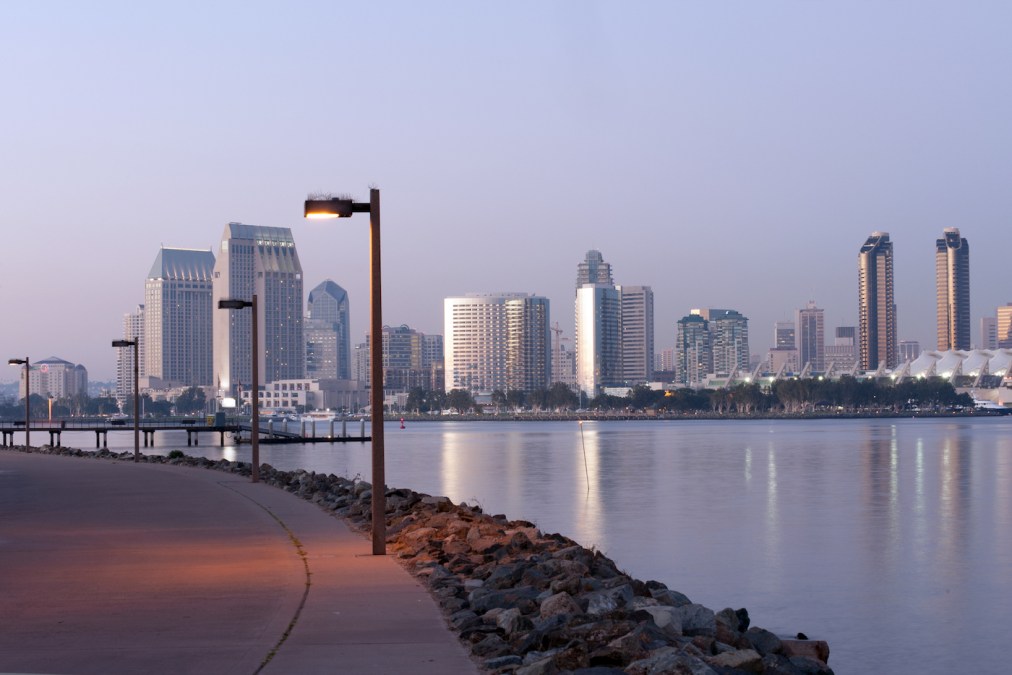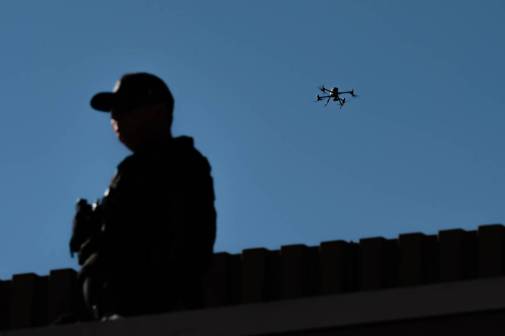San Diego’s smart streetlights misunderstood, officials say

Privacy advocates are clashing with law enforcement in San Diego over the city’s network of modern streetlights, which like those in many cities are outfitted with environmental monitors, acoustic sensors and video cameras. While city officials say the streetlights feature many environmentally beneficial assets, religious and minority groups are concerned with their surveillance capabilities, while law enforcement says critics are just stoking fear based on misinformation.
The plan to deploy sensor-equipped streetlights throughout the city was approved in December 2016, and the city began deploying the packaged environmental, acoustic and optical sensors from General Electric, called CityIQ nodes, about a year later. Data from the environmental sensor collection is stored and made publicly available for seven years on a GE-maintained cloud. The city paid $30 million in total to install 4,200 nodes and upgrade 8,700 other streetlights to LED bulbs, and officials have said the resulting energy savings will eventually pay off the cost of the new devices.
The city also maintains an online map that gives the exact coordinates of each installed and planned device. But a divide between residents concerned about their privacy in America’s fifth-most surveilled city, and a local government that prides itself on being “America’s smartest city” has led to activists calling on San Diego Mayor Kevin Faulconer to impose a moratorium on the technology.
Demonstrators last week converged on San Diego City Hall, raising concerns about the acoustic sensors picking up conversations and people being surveilled without cause. In addition to a moratorium, the protesters requested public participation in creating use policies for the cameras within the sensor nodes, as well as access to public records of how the technology has been used so far.
“There was never any conversation about surveillance issues and privacy interests,” Geneviéve Jones-Wright, the legal director for the Partnership for the Advancement of New Americans, an advocacy group that helps refugees, told the San Diego Union-Tribune at the protest. “We stand here today as community members on Constitution Day to say, ‘Respect us and our right to privacy.’”
The sensor-equipped streetlights have also alarmed the Council on American-Islamic Relations, which joined the call for a moratorium. Dustin Craun, the executive director of CAIR’s San Diego branch, wrote in a Medium post last week that many of the CityIQ nodes, according to his reading of the online map, are located near many of the city’s mosques, sparking fears of the nodes’ misuse by a federal government led by a president who has repeatedly antagonized Muslims.
“With the Trump administration’s targeting of Muslim communities we cannot allow this technology to be in place, especially if the Trump administration were to stay in power and increase targeting of Muslim communities in his second term,” Craun wrote.
But Faulconer and law enforcement officials, who began using the cameras embedded within the nodes last fall, insist that residents have nothing to worry about.
“The bottom line is you have nothing to worry about unless you decide to commit a violent crime on a street corner in full public view,” Faulconer’s office said in a statement in response to City Hall protesters.
San Diego Police Capt. Jeffrey Jordan told StateScoop on Tuesday that the nodes’ acoustic sensors are enabled but not activated. And even if they were, he said, they’re designed to listen for gunshots, and wouldn’t be able to pick up conversations of passing pedestrians or cyclists — which would violate federal wiretapping law. Unlike environmental data, which the city will store for seven years, the raw video footage captured by the cameras is only kept for five days before being destroyed, Jordan said. The cameras are manually obscured to prevent capturing any private property, and aren’t capable of facial recognition, which Detroit, New York and Chicago have experimented with.
Fewer than 100 officers within San Diego’s 1,800-officer police department are authorized to review footage after a crime has occurred, and their interactions with it are audited. The footage itself is publicly available through records requests. The city has accessed footage after a crime 164 times in the last 13 months that it has been made available, Jordan said, and always in a reactive manner, or in response to a violent crime or incident.
Jordan, who manages the camera program, said that despite his department’s efforts, misinformation is causing residents to push back against the program. The city only started holding its 12 community information sessions about the installations in June 2019, despite the project’s approval in 2016, and some city council members have claimed to be unaware of the full capabilities of the nodes until earlier this year, though Jordan said San Diego Police have briefed every council member on the technology.
“We could have done a better job of communicating the change to the public and to the policymakers here,” Erik Caldwell, the city’s deputy chief operating officer, told the San Diego Voice in April. “Hindsight being 20/20, you could always do things better.”






